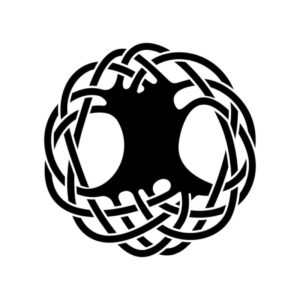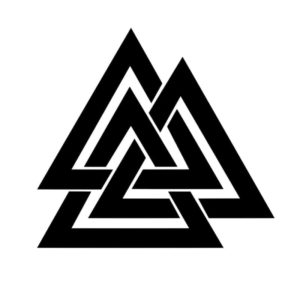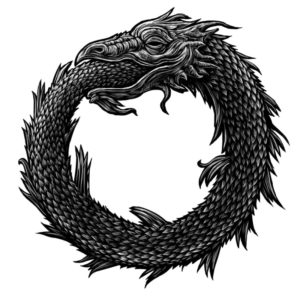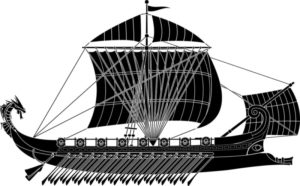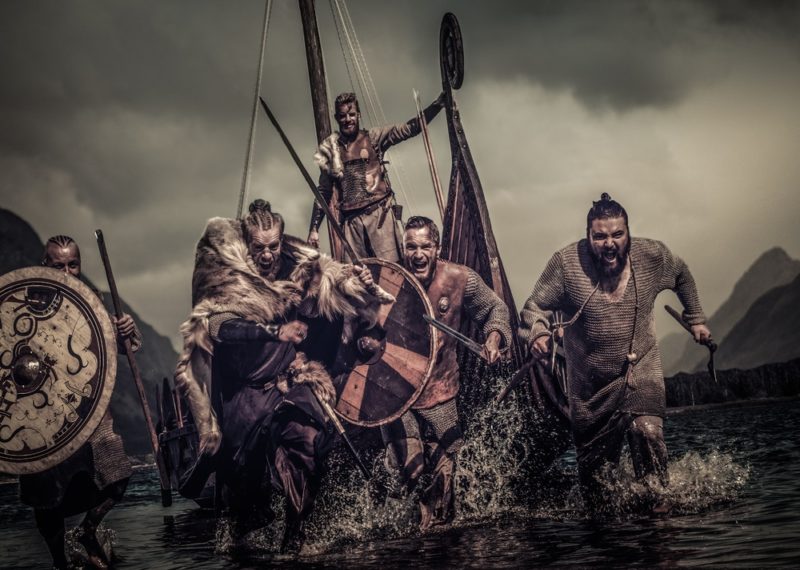Viking tattoos have been a common topic of debate in Norse mythology. The Viking age has provided us with a lot of history about these Norse warriors, including their culture, weapons, and more. However, did the Viking warrior ever get a Viking face tattoo?
Current representation of Viking warriors in TV shows and movies depict heavily tattooed people all over their bodies and faces. However, that doesn’t mean that the average Viking tattoo was like what we see online.
The following page will discuss Viking tattoos in depth, as well as other important details in Norse mythology. Keep reading if you want to know more about these Viking warriors!
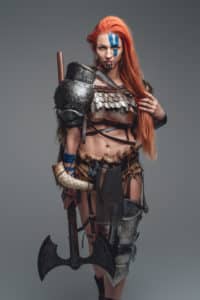
Did Viking Tattoos Really Exist in Norse Mythology?
As mentioned before, Viking tattoos have been a source of common debate among different people today. Overall, there’s no definitive way to tell if the Viking tattoo culture was an actual thing since there has never been found a well-preserved body with its skin intact; this means that, in theory, there’s no actual evidence that Vikings tattooed themselves.
Fortunately, there are some historical texts coming from the Viking Age that may suggest that Viking tattoos did actually exist.
The History of Ibn Fadlan
Ibn Fadlan was an Arabic diplomat who was traveling north in the 10th century. When he reached Volga, which is now known today as part of Russia, he met some people that he named “Rus People.” Overall, the Rus people had been known for being Viking traders coming from Scandinavia.
According to Fadlan’s findings, Rus people had perfect bodies with ruddy skin, bodies tall like palm trees, and blond hair. Moreover, he described Vikings’ tattoo features on the person’s body. These features included trees, figures, and other shapes.
Fadlan wrote in his book that the figures seen on the Rus people’s bodies were dark green, although these are presumed to be dark blue or gray instead since those are the colors that come from ash or charcoal.
While this could be evidence that Vikings did get tattoos, Ibn Fadlan doesn’t mention these shapes in people’s bodies as tattoos. On the contrary, he mentioned those shapes as “paintings.”
In the rest of the book, Fadlan goes over the rest of the Rus people’s body characteristics. He mentioned the men having an ax, a sword, and a knife at all times. On the other hand, he mentioned women wearing a box of iron, copper, gold, or silver on either breast.
The Contributions of Al-Tartushi
Al-Tartushi was another Arab writer who had some things to say about Northmen and women. Particularly, he wrote about both of these people wearing eye makeup, specifically eyeliner. This would suggest that these people were comfortable using marks to adorn their skin, although these decorations didn’t necessarily have to be tattoos.
Moreover, some historical references point out to Northmen getting their faces painted during rituals, which would come close to what we know as tattoos. Unfortunately, these may be confused with temporary tattoos.
Further investigation leads us to believe that Northmen were surrounded by people who tattoed themselves, so it may not be a surprise that they also used materials to get ink on their skins.
How Did Decorations Work in the Viking Age?
As mentioned in several findings, Vikings were known for having good hygiene and for decorating themselves with several garments. In that sense, it may be safe to assume that they decorated their bodies and faces with tattoos. In Scandinavia, tattoo art is popular, and there have also been found several tattoo items, like tattoo needles coming from the Bronze Age in Denmark.
Summarizing – There’s No Evidence that the Viking Tattoo Truly Exists
Unless advanced technology or further findings about Norse mythology allow us to discover more about the history of Vikings, there’s not much solid proof that says that they did get tattoos. Moreover, Vikings weren’t known for writing down their history, so there’s no direct source that links them to tattoos.
The only piece of written history that we can use today as proof is the book from Ibn Fadlan, and even then, we’re not 100% sure if the term “tattoo” is accurate here since the author referred to these as “paintings,” which would be seen as a temporary tattoo instead.
Fortunately, decorating a person’s skin with paint or other materials was thoroughly done in Europe in the Dark Ages (and possibly way before that). Taking all of the sources we have into consideration, we could assume that some Vikings got tattoos on their faces.
What Did the Vikings Likely Get Tattooed?
Taking everything we know until now about Norse mythology, it would be safe to ask: “What could possibly a Viking get tattooed? As mentioned before, popular TV shows like “Vikings” have shown us some representations of designs that these warriors likely had on their skins.
According to findings from Ibn Fadlan, he would primarily see “patterns, animals, trees, and other symbols.” This is a rather vague description in the written records, so, for now, we will have to assume what these warriors got tattooed on themselves.
Vikings could have gotten tattoos for many reasons, including personal identification, for getting magical powers, or for using them as a powerful symbol in battle. Currently, there are several beautiful patterns from these ancient people that people today use as tattoos. We’ll go over some popular designs that these people may have used as tattoos in Northern Europe and other areas.
Yggdrasil Tattoo
It refers to the “Norse Tree of Life,” which was supposed to have branches that held the nine worlds of the Viking world together. These worlds included Midgard and Asgard, which are popularly known today as Earth and the realm of the gods.
Considering how important this tree was to Vikings, it would be safe to say that they could have gotten it tattooed on their bodies and faces. Moreover, considering written records talk about some “tree-shaped” tattoos on Vikings, that would refer to this particular tree.
Troll Cross Tattoo
Many Vikings were known for wearing elements on their bodies as a symbol to protect themselves from different things. Overall, the Troll Cross tattoo is supposed to protect the wearer from trolls and elves. This symbol was used in several Viking houses, so it may not be surprising for a Viking to get this symbol on their skin.
Valknut Tattoo
This one shows one of the most intricate patterns of any other design. Overall, the Valknut design features three interlocking triangles. The Valknut sign often appeared alongside Odin, so many people believed it was his symbol. According to ancient history, Vikings believed that this Valknut sign indicated that Odin was welcoming warriors to come to Valhalla, which is the Hall of the Brave Warriors.
Interestingly enough, the Valknut tattoo is popularly known today too. You can see it in jewelry designs, tattoos, and household designs. Today, this design is believed to empower the wearer so that they can overcome any ups and downs.
Ouroboros Tattoo
The Ouroboros tattoo is another piece that is currently popular among many people. The reason why this design is so popular is that it has many meanings, depending on the interpretation. Today, many people see this symbol as a representation of birth, death, and renewal. Other people see it as the ultimate representation of the cycle of life.
In Norse mythology, this design was used to represent the physical appearance of Jörmungandr, which was Loki’s son. According to history, this great snake grew so large that it was able to encompass the entire planet. Although this tattoo has a deep meaning, there’s not much evidence that shows if this was a design that Vikings or people of Scandinavian descent wore on their skins and faces.
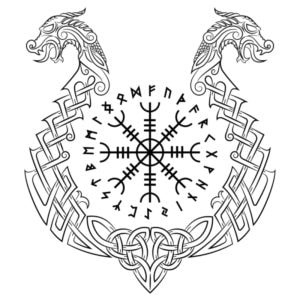
Helm of Awe Tattoo
Also known as the Aegishjalmur, this symbol comes from the Icelandic Vikings. Generally speaking, the design was used for protection and to intimidate enemies in battle, so it would have made sense for Vikings to get this design tattooed on their bodies.
Overall, the design includes eight-armed spikes that point out the design, which gave Vikings the courage they needed to win battles. Although this design isn’t that common today, there are some people that still use it as a symbol of courage.
Web of Wyrd Tattoo
This design shows that Vikings were really creative people. Overall, the “Web of Wyrd,” also known as the “Viking Matrix of Faith,” was used as a powerful symbol of runic shapes. According to many depictions, this symbol was woven by the Norns. The Norns were supposed to shape the destiny of everyone.
History claims that this symbol was used as a reminder that your actions can affect the present and future. In other societies, it was used as a sign of universal interconnectedness. Some people still get this design today since the meaning can be applied to today’s world.
Huginn and Muninn
Odin always had a pair of ravens perching on his shoulders, which were called Huginn and Muninn. Although there aren’t many details about these ravens, they were thoroughly admired by people, and they were seen as a symbol of Odin’s presence and his power. According to Norse history, Huginn meant “Thought,” and Muninn meant “Memory.”
Vegvísir Tattoo
Overall, Vegsívir is meant to represent “The Path Finder.” Vikings used this symbol because they believed it would help them get to their destination faster and safer. Today, this design is also used for a similar purpose. People get it tattooed as a way to represent that they will not get lost in life.
Mjölnir Tattoo
Most people know Mjölnir, which is Thor’s mighty hammer. According to Norse mythology, this is one of the weapons that warranted more respect from people since it was associated with storms, thunder, and lighting. Moreover, Vikings respected this hammer because it was the symbol of Thor, who was the most powerful god.
Some Vikings may have worn this symbol in battle as an amulet to preserve life since it would offer them the courage and generosity to fight to the end and win their battles.
Gungnir Tattoo
Gungnir was Odin’s mighty spear, which apparently, never missed its objective. Vikings used this symbol to represent bravery and victory in battle. Considering how much respect this weapon had in Norse mythology, it would be safe to assume that some of these people got the design in their bodies to gain courage, strength, and power to fight.
Longboat Tattoo
The “longboats” were the ships that carried warriors to their battle places and other targets throughout Northern Europe. These were also used to trade goods with other societies. Some longboats had dragon heads carved into the bow, which made them distinguishable to whoever saw them. Considering this is one of the most popular symbols of the Viking age, it would have made sense for Vikings to get it on their skin at some point.
Runes
Finally, runes are likely some of the most common tattoos that Vikings got on their skins (if they did get tattoos). Overall, the rune system was the common alphabet for Vikings. Although these symbols weren’t used much for communication, many Vikings used them to seek help from gods and seek power for battle.
Also known as the “magical alphabet,” runes are still a powerful design that people get on their bodies and faces to represent a plethora of things. Some people use them to invoke deities and make wishes, whereas others get them to symbolize power, peace, and any other thing the person may want.
Bottom Line
While there’s not much proof confirming the existence of Viking tattoos, some written records from the Arab world suggest that this may have been a possibility. Old Norse writings show Vikings wearing Frankish swords, ridged blades, and other artwork in battle. However, there’s not much information regarding face tattoos or paintings.
Don’t let this shun you away from getting a Viking tattoo yourself! There are dozens of different designs with powerful meanings, and you can give them your own meaning if you wish. Tattoos are one of the most popular ways to show personality and beliefs, so if you identify with anything regarding the Viking culture, getting a face tattoo could be an excellent choice.
Q&A
Did Vikings Wear Face Tattoos?
Evidence for Viking tattoos is scarce. While some Arab findings indicate that Norsemen and women did decorate their skins, there’s not much information surrounding face tattoos themselves. Considering how Vikings decorated themselves all the time, it can be assumed that they did get face tattoos.
What Kind of Tattoos Did Vikings Have?
According to the findings of Ibn Fadlan, people had body paintings from their fingertips to their necks, and these paintings represented trees, figures, and other similar items, although there’s no more specific information about the matter.
Is It Disrespectful to Get a Viking Tattoo?
Not really. Some people may even see Viking tattoos as a show of respect to Scandinavian ancestors or as a way to celebrate Viking culture, values, and more.

